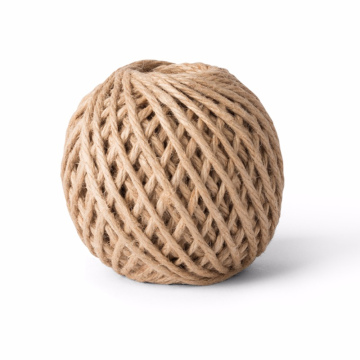The Historical Significance of Tea Rooms in Japan
The traditional Japanese tea room, or chashitsu, holds a pivotal role in Japan’s rich cultural heritage, deeply entwined with the practice of the tea ceremony, known as chanoyu. These serene spaces have evolved over centuries, originating in the 12th century, influenced by Buddhist practices and the aesthetics of simplicity and natural beauty. Initially, the tea room was a modest structure often used by monks for meditation and relaxation, gradually transforming into a vital venue for cultural gatherings and social interaction.
The architectural design of chashitsu reflects a deep-rooted emphasis on mindfulness and harmony with nature, encapsulating the principles of wabi-sabi, which celebrates imperfection and transience. Key features, such as tatami mat flooring, sliding shoji doors, and natural materials, contribute to the tranquil atmosphere essential for the tea ceremony. Renowned tea masters, like Sen no Rikyū, played a crucial role in defining the rituals and aesthetics of tea rooms, emphasizing simplicity, subtlety, and the importance of the shared experience during tea gatherings.
As society progressed into the Edo period, tea rooms gained further significance, becoming centers for cultural exchange and artistic expression. They were not merely functional spaces but reflections of social status and refinement, often adorned with exquisite art and calligraphy that complemented the tea-drinking experience. The evolving design of chashitsu became directly linked to the spiritual and meditative aspects of the tea ceremony, encouraging attendees to embrace mindfulness and tranquility.
Today, traditional Japanese tea rooms continue to serve as a peaceful getaway, embodying the essence of Japanese culture, where respect, harmony, and tranquility converge. They invite not only reflection on history but also a deeper understanding of the human relationship with nature and the importance of mindful living.
Architectural Features of Traditional Tea Rooms
The architectural landscape of traditional Japanese tea rooms epitomizes a harmonious balance between natural elements and meticulously constructed spaces, reflecting the deep cultural principles intertwined with tea practices. Wood is the predominant material used in the construction of these tea rooms, often chosen for its availability and ability to resonate with the surrounding environment. Common types of wood, including cedar and cypress, not only serve functional purposes but also enhance the aesthetics of the space, fostering a connection to nature.
Another essential feature of traditional tea rooms is the use of tatami mats, which create a soft, inviting floor surface. These mats, crafted from rice straw and covered with woven rush grass, not only provide comfort but also promote a sense of tranquility and simplicity. The tatami's scent and texture offer a sensory experience that is integral to the tea ceremony's contemplative nature. Moreover, the dimensions of the tea room are often carefully proportioned to cultivate an intimate and serene atmosphere, where guests can disconnect from the outside world.
Natural light plays a pivotal role in enhancing the tea room's ambiance. The incorporation of shoji screens—translucent sliding doors made of wood and paper—allows soft light to filter into the space, creating patterns that shift throughout the day. This interplay between light and shadow adds a dynamic quality that aligns with the Japanese aesthetic of 'wabi-sabi', which values the beauty in imperfection and transience. Furthermore, gardens are frequently adjacent to tea rooms, allowing the tea drinker to experience the calming presence of nature. The seamless integration of indoor and outdoor spaces emphasizes tranquility, enhancing the overall experience of the tea ceremony.
In summary, the architectural features of traditional Japanese tea rooms, characterized by the use of wood, tatami mats, and natural light, along with the incorporation of gardens, create a distinctive environment that invites serenity and mindfulness.
The Art of Tea Ceremony: Rituals and Practices
The Japanese tea ceremony, known as "chanoyu," is a highly structured ritual that embodies the principles of harmony, respect, purity, and tranquility. This ceremonial practice is most commonly conducted within a traditional Japanese tea room, where nature and simplicity coexist, providing a serene backdrop for the experience. The tea ceremony centers around the preparation and serving of matcha, a finely ground green tea, reflecting not only a beverage experience but a spiritual journey.
The ceremony typically begins with the host inviting guests into the tea room, which is meticulously prepared to create an atmosphere of peace and harmony. Upon entering, guests are encouraged to leave behind their daily grievances, fully immersing themselves in the moment. The first step in the tea-making process is the careful selection of tea utensils, each chosen for their aesthetic qualities and symbolic significance. The teaware often comprises a tea bowl, tea whisk, and tea scoop, each holding unique cultural value.
As the host prepares the matcha, each action is deliberate and measured, demonstrating mindfulness and respect. The matcha is poured into the bowl, followed by hot water, mixed using the bamboo whisk in a rhythmic motion. This preparation is not merely functional; it is imbued with artistry. The significance of every movement—from the handling of utensils to the presentation of the tea—reinforces the tea ceremony's focus on presence and appreciation for nature.
Moreover, the exchange of tea among guests fosters a deep connection and sense of community. As participants sip their tea, they are encouraged to engage in thoughtful conversation while observing the beauty of their surroundings. This communal aspect elevates the ceremony, transforming it into a ritual of togetherness and shared experience, underscoring the notion that the tea ceremony transcends the act of drinking tea—it is a profound exploration of spiritual connection and mindfulness.
Experiencing a Tea Room: Visiting Tips and Recommendations
Visiting a traditional Japanese tea room offers a unique opportunity to immerse oneself in Japan's rich cultural heritage. To make the most of this serene experience, it is essential to follow specific etiquette and be aware of what to expect during a tea ceremony. When entering a tea room, it is customary to remove your shoes, as this signifies respect for the space. In many tea rooms, you will find a tatami mat flooring, which adds to the authenticity and atmosphere.
It is advisable to arrive quietly and observe the surroundings before your tea experience begins. Be mindful of your posture during the ceremony; sitting cross-legged on tatami is common, and it might take some practice to maintain comfort. The host will typically offer you matcha, a finely powdered green tea, accompanied by traditional sweets, known as wagashi. When accepting the tea, it is polite to bow slightly and to show appreciation for the preparation and offering.
As for notable tea rooms, several across Japan provide exceptional experiences. For instance, the Nanzenji Junsei in Kyoto is celebrated for its tranquil setting in a historic temple complex, while the Chazen Tea House in Tokyo blends traditional and modern aesthetics. Visiting these establishments not only allows you to enjoy a finely crafted cup of tea but also to engage in the tradition and rituals surrounding the tea ceremony.
To truly engage with the tea room experience, take a moment to appreciate the craftsmanship of the tea utensils and the aesthetics of the room. This setting is designed to foster peace, contemplation, and a connection to nature, reinforcing the importance of mindfulness in Japanese culture. By respecting these practices, visitors can transform their time in a tea room into a memorable reflection of Japan's serene lifestyle.








